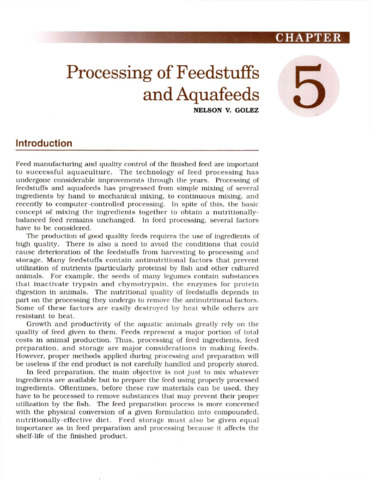On-farm feed management practices for Nile tilapia (Oreochromis niloticus) in the Philippines
| dc.contributor.author | Romana-Eguia, Maria Rowena R. | |
| dc.contributor.author | Laron, Manuel A. | |
| dc.contributor.author | Catacutan, Mae R. | |
| dc.contributor.editor | Hasan, Mohammad R. | |
| dc.contributor.editor | New, Michael B. | |
| dc.date.accessioned | 2015-03-31T15:10:40Z | |
| dc.date.available | 2015-03-31T15:10:40Z | |
| dc.date.issued | 2013 | |
| dc.identifier.citation | Romana-Eguia, M. R. R., Laron, M. A., & Catacutan, M. R. (2013). On-farm feed management practices for Nile tilapia (Oreochromis niloticus) in the Philippines. In M. R. Hasan & M. B. New (Eds.), On-farm feeding and feed management in aquaculture (FAO fisheries and aquaculture technical paper No. 583) (pp. 131-158). Rome: Food and Agriculture Organization. | en |
| dc.identifier.isbn | 9789251079782 | |
| dc.identifier.issn | 2070-7010 | |
| dc.identifier.uri | http://hdl.handle.net/10862/2162 | |
| dc.description.abstract | The contribution of the Philippines to tilapia production in Asia has increased steadily in the past five years as it addresses hunger and poverty alleviation in the region. Commercial tilapia aquaculture in the Philippines has improved as farmers have become aware of the importance of adopting innovative husbandry technologies. These include the use of intensive culture, using novel feed ingredients, improving the quality of industrial aquafeeds, adopting cost- effective feeding strategies and efficient pond fertilization methods, and culturing improved genetic strains. A case study was conducted to: a) assess current tilapia feed management practices; b) determine recent nutrition-based innovations that include the use of alternative feed ingredients, the adoption of nutritionally complete commercial tilapia feeds, and improvements to feed management practices; and c) evaluate these factors in terms of improved production efficiencies. Thirty-two farmers from selected tilapia cage hatcheries, pond hatcheries, grow- out cages and ponds in Regions III and IV-A (known major tilapia producing regions in the Philippines) were interviewed. The issues addressed included their farm management practices, with particular focus on tilapia feed preferences; quality, procurement and storage methods; and feeding strategies. Their responses were collated and analysed in the context of information simultaneously gathered from the scientific literature, popular publications and relevant websites. The results from the case study highlight the importance of farmers being trained and remaining well-informed about recent improvements in feed technologies and the use of efficient cost-saving feeding strategies to optimize the production of seed and marketable tilapia. Recommendations on how to increase tilapia production through improved feed and feed management practices are described. Finally, recommendations for local regulatory agencies to implement aquafeed quality and nutrient standards are provided. | en |
| dc.description.sponsorship | The study was funded by the Food and Agriculture Organization (FAO) of the United Nations. | en |
| dc.language.iso | en | en |
| dc.publisher | Food and Agriculture Organization | en |
| dc.relation.ispartofseries | FAO fisheries and aquaculture technical paper; No. 583 | en |
| dc.relation.uri | https://www.fao.org/fishery/docs/CDrom/T583/root/05.pdf | |
| dc.subject | Oreochromis niloticus | en |
| dc.subject | Philippines | en |
| dc.title | On-farm feed management practices for Nile tilapia (Oreochromis niloticus) in the Philippines | en |
| dc.type | Book chapter | en |
| dc.citation.spage | 131 | |
| dc.citation.epage | 158 | |
| dc.citation.bookTitle | On-farm feeding and feed management in aquaculture | en |
| dc.subject.asfa | feed preparation | en |
| dc.subject.asfa | intensive aquaculture | en |
| dc.subject.asfa | feeds | en |
| dc.subject.asfa | freshwater aquaculture | en |
| dc.subject.asfa | artificial feeding | en |
| dc.subject.asfa | fish culture | en |
Files in this item
| Files | Size | Format | View |
|---|---|---|---|
|
There are no files associated with this item. |
|||
This item appears in the following Collection(s)
-
Books and Book Chapters [123]



